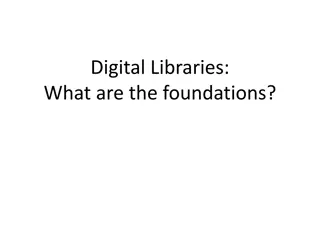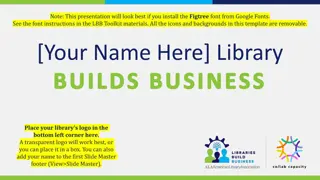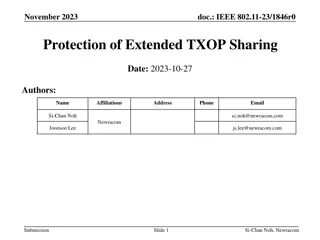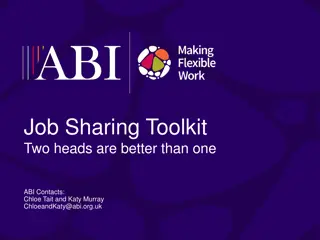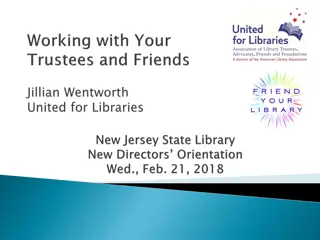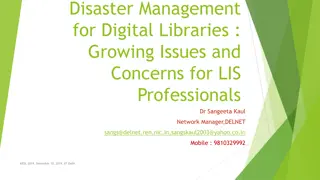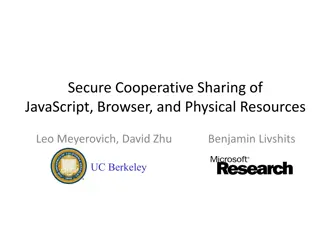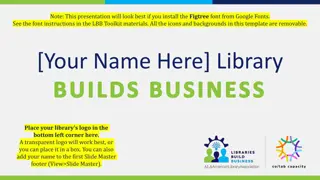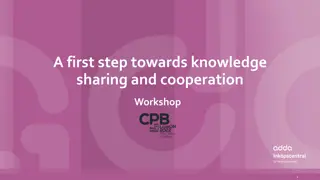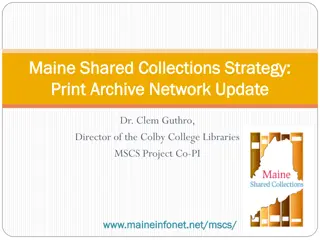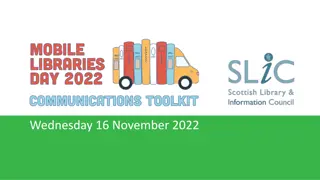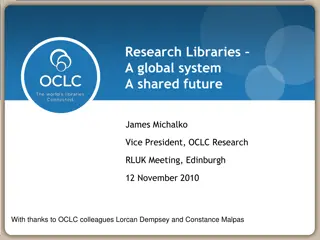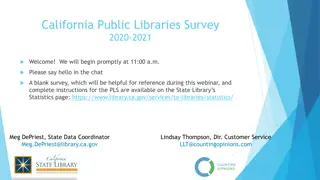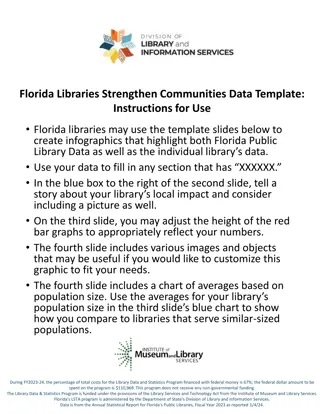Empowering Knowledge Sharing: The Role of Digital Libraries
Explore the diverse user base of digital repositories, including scholars, museums, librarians, archivists, educators, and special interest enthusiasts. Learn how these users utilize digital libraries for research, preservation, collaboration, and dissemination of knowledge in various fields.
Download Presentation

Please find below an Image/Link to download the presentation.
The content on the website is provided AS IS for your information and personal use only. It may not be sold, licensed, or shared on other websites without obtaining consent from the author. Download presentation by click this link. If you encounter any issues during the download, it is possible that the publisher has removed the file from their server.
E N D
Presentation Transcript
What do we call It? Digital Asset Management System (DAMS) Institutional Repository (IR) Repository Software Content Management System (CMS) Digital Library Data repository Electronic records systems
Who are your Audience/Users? General public Institutional Support history and mission of your employer: University Archives, Corporation, Government, Non- profit Museum Collecting archives Library Research or lab Learning Objects (educators) Data repository (beyond scope of class)
Scholars A digital library to publish an essay or digital dissertation, share primary source collections, and collaborate with others in the creation of digital scholarship.
Museums Use digital library to share collections and build online exhibits with objects you cannot display in the museum. Invite your visitors to tag and mark items as favorites, or to contribute content. Start a blog to publish museum news and podcasts.
Librarians Use a digital library as the publishing tool to complement your online catalog or launch a digital exhibit. Academic librarians may publish open access research publications and data
Archivists Use a digital library to share your collections, display documents and oral histories. Preserve fragile materials Rare or valuable item can be viewed with greater eases.
Educators Use a digital library to build inquiry-based tasks for students, to create lesson plans with accompanying primary sources, or build learning modules with your team.
Special Interest/Enthusiasts Use a digital library to share you personal research or collections with the world, build exhibits and write essays that showcase your expertise.
What Assets do you Own? What kind of objects do you want to store? Photographs Text documents Databases Movies Audio Web pages Newspapers Data Your assets may dictate what system you choose
Use Cases or Stakeholders Types of material may dictate the software you choose User s expectations Branding, mobile, Sensitive and restricted data Does the software need to integrate with enterprise applications Self submission or highly curated
Features/Ad-Ons Can come already installed or be installed as plugins, as needed basis Examples Bulk uploaded CSV Omeka s Plugins https://omeka.org/add- ons/plugins/
Metadata/Vocabularies/Authorities What comes with it?: Dublin Core Thesauri Metadata customizable? Can you add your own
Platforms Optimized for Specific Purposes or Users Example we can place ContentDM and DSpace on opposite ends of spectrum Less curation, self submission, more utilitarian, once size fits all. Highly curated, no self submission, rich user experience
DSpace Digital repository designed to allow scholars to share academic research Turnkey solution or repository in a box Open Source Dublin Core metadata Workflows that allow levels of administration from library to scholar Allows for self submission by scholar
ContentDM Very library biased Not very good at IR functions Costly, but lots of functionality Many institutions using OCLC, will be around for awhile Hosted or custom installed Aging code base, so unlikely to see massive changes Lock-in
Omeka Swahili word meaning to display or layout goods or wares; to speak out; to spread out; to unpack. Open source digital library Developed by the late, Roy Rosenzweig at George Mason University Uses Dublin Core Like Wordpress for exhibits and collections
Administrator and User Roles Does the application allow for assigning roles within the software? User Cataloger Administrator Student Assistant Can it be integrated to a directory service, like Active Directory, LDAP or Shibboleth
File types/Asset Types What files can you upload into the system? Audio Newspapers/Books Video Images File Types Tiff, Mov, Wav, Jpeg2000
Some Key Questions to Ask What is your institutions long-term financial commitment to the digital library? What are your resources in staffing and technology? Is grant funded or line item in your yearly budget? What is the size of your collection? Will the software scale?
Hosted DL Hosted pushes technical oversight to vendor Great for small institutions and big, too Monthly or yearly fee, usually more costly Lots of coordination Phone calls and email Tickets Can t customize, and if so, additional costs Untimely downtime The costs are more upfront
Locally Administered DL Requires robust technology environment Usually one dedicated web or server administrator Allows for most customization Branding or look and feel Integrate with other systems Usually less yearly expense Can hire technology consultant for install and upgrades
Consortia Approach to DL Inexpensive approach to entering the DL game Technical help from consortia Not a lot of customizations options Updating the collection or configuration may require a lot of coordination Collections might get more exposures, but at the same time lost with competing collections. A few examples: NY Heritage California Digital Library Ohio Digital Library Minnesota Digital Library
Open Source vs. Proprietary The term open source, source refers to source code, the human-readable computer code which is the origin, or source, of the computer application. Open refers to the terms of access to that computer source code. So open source software is software for which the source code is open for inspection, changing, customization
Advantages of Open Source Access to source code and ability and right to modify it Right to redistribute modifications to benefit wider community Free (not always) Excellent support networks Large and enthusiastic user base Disadvantages Limited or no accountability Informal and unaccountable support channels
Types of Open Source Operating System Linux, Server software Apache, Tomcat, Programming Language PHP, Perl, Building blocks ImageMagick, LibXML, LibXSLT, Saxon, Blacklight, Solr
Proprietary or Fee-based DLs ContentDM (OCLC) LUNA Insight Digital Commons (Bpress) Past Perfect DigiTool (Ex Libris) ***Only to name a few!***
Open Source DLs Fedora Commons Hydra Islandora Dspace ePrints Greenstone Omeka
Turnkey Up in running quickly Tried and true UI and settings, but can become outdated Less expertise and money May not match look and feel of website Lowest common denominator Can t customize, especially if it is proprietary Difficult to experiment High dissatisfaction over time
Customized Customized Most likely to meet you and your user s needs What most want, but not always practical Up front investment in time and money Potentially costly Customized settings, means each upgrade more times consuming, thus costly and risky to manage over time








